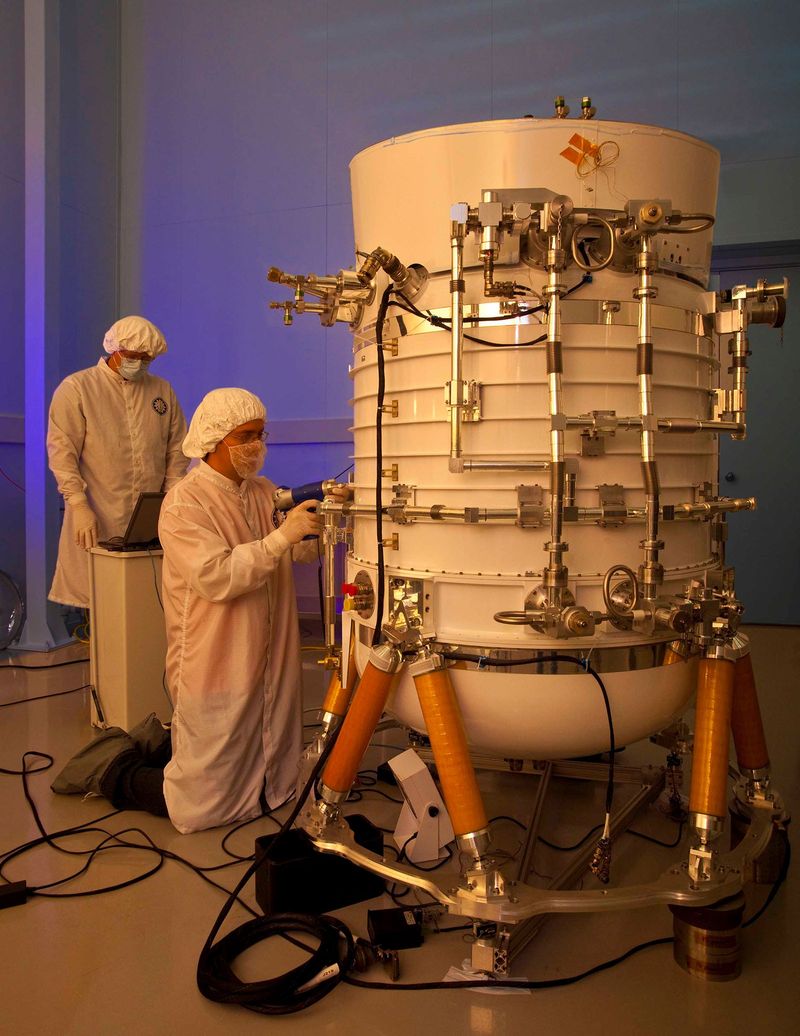
Just before sunrise on Friday, July 10, 2020, Space Dynamics Laboratory electro-optical engineering group lead James Champagne captured this image of Comet NEOWISE from the Deep Canyon Trailhead in Cache Valley. (Credit: James Champagne).
A comet discovered by a space-based telescope built by Utah State University's Space Dynamics Laboratory can be seen with the naked eye soaring through space throughout the summer.
Named after the spacecraft that first spied the frozen visitor, Comet C/2020 F3 (NEOWISE), more commonly known as Comet NEOWISE, was discovered on March 27, 2020. It has traveled from the far reaches of our Solar System and now provides stargazers on Earth with a spectacular light show. On July 22, 2020, Comet NEOWISE will achieve its closest approach to Earth—about 103 million kilometers (64 million miles) away.
Comet NEOWISE was created at the dawn of our Solar System 4.6 billion years ago and will start its long cosmic flight past the orbits of Jupiter, Saturn, Uranus, and Neptune to the distant horizons of the system in mid-August. If they're lucky, our descendants 227 generations from now will be the next humans to see NEOWISE. The comet's orbit is about 6,800 years, and it won't make its way back to the inner Solar System until then.
For those in the Northern Hemisphere, Comet NEOWISE has been most visible at dawn and is now transitioning to the evening sky. About an hour after sunset, the comet can be observed near the northwestern horizon. As the month progresses, it will rise higher in the sky, moving from the constellation Lynx toward the Big Dipper.
In 2009, NASA's Wide-field Infrared Survey Explorer, or WISE, was launched into space. SDL manufactured the state-of-the-art telescope for NASA to map and catalog the sky with far better sensitivity and resolution than previous space-based infrared survey telescopes.
SDL designed WISE to detect heat given off by objects in space ranging in temperature from minus 330 degrees Fahrenheit to 1,300 degrees Fahrenheit. Because WISE was designed to look for objects cooler than human eyes can observe, the telescope was built to detect infrared light. The mission also required that the telescope remain cooler than the objects it was photographing—an engineering challenge of galactic proportion.
Following its initial mission success, the spacecraft was put into on-orbit hibernation in February 2011. In September 2013, NASA woke up the sleeping spacecraft to assist with the agency’s efforts to identify and characterize the population of near-Earth objects. NASA renamed the spacecraft Near-Earth Object WISE, known as NEOWISE, and it began hunting the universe for comets and asteroids close to Earth's orbit.
"The discovery of Comet NEOWISE is an exceptional example of the success of the NEOWISE mission. The opportunity to view a newly discovered object in space with the naked eye is extraordinary," said Pedro Sevilla, SDL's NEOWISE program manager and payload operations lead. For decades, SDL has worked with NASA to help reveal the unknown for the benefit of humankind, and we are honored to be a part of this important mission."
NEOWISE is a project of NASA’s Jet Propulsion Laboratory, a division of Caltech, and the University of Arizona, supported by NASA's Planetary Defense Coordination Office.
SDL has been solving the technical challenges faced by the military, science community, and industry for six decades and supports NASA's vision to reveal the unknown for the benefit of humankind. As one of 14 University Affiliated Research Centers, SDL serves as a subject matter expert in its core research areas to the US Government, ensuring that essential engineering and technology capabilities are maintained. SDL is a research laboratory headquartered in North Logan, UT, and has offices in Albuquerque, NM; Bedford, MA; Dayton, OH; Huntsville, AL; Houston, TX; Los Angeles, CA; Stafford, VA; and Washington, D.C. For more information, visit www.spacedynamics.org.

Contact
- SDL Public Relations
- 435-713-3054
- pr@sdl.usu.edu